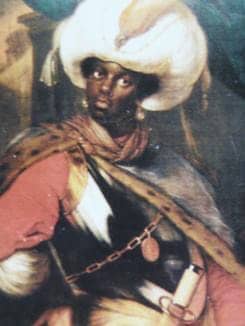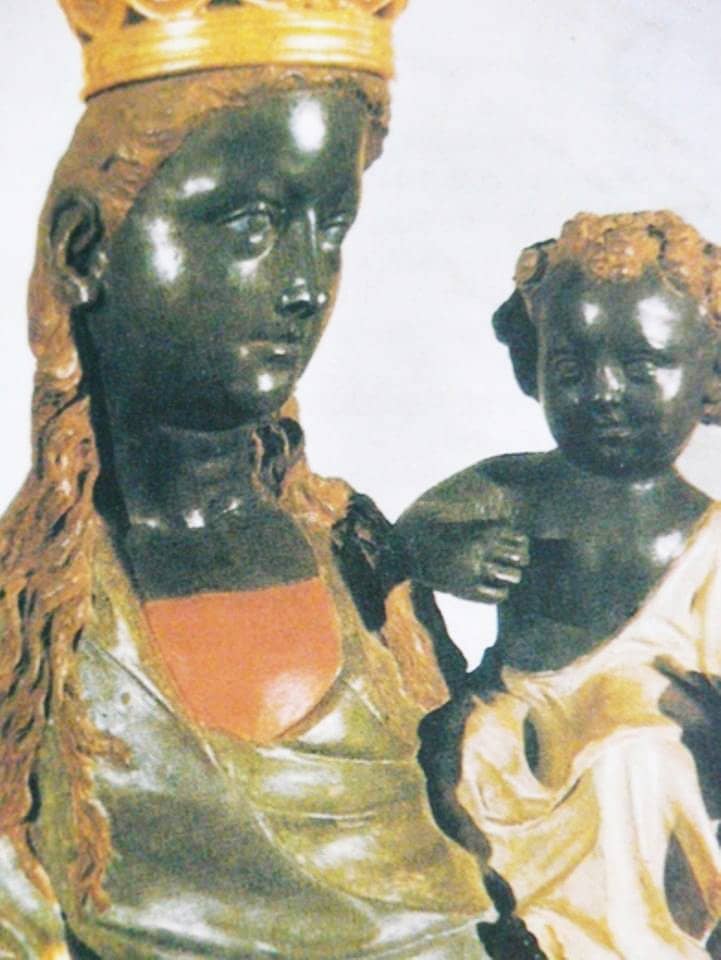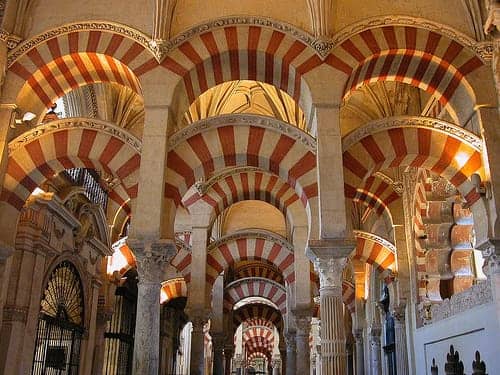by Minister of Information JR
Block Report Radio interview broadcast recently on KPFA 94.1FM
M.O.I. JR: How are you?
Runoko: I’m very good, my Brotha. How are you?
M.O.I. JR: I’m great. I know that you have been doing a lot of research around the planet, relating to different civilizations, talking about the seed of those civilizations being Africans. Can you tell us a little bit about who you are, for those who have never heard of you.
Runoko: Well, my name is Runoko Rashidi. I’m a historian first and foremost and I guess an anthropologist too. I travel a great deal. Over the last 12 years, I’ve been very fortunate to have visited a hundred different countries, colonies and overseas territories in a certain time, all in search of the African presence. I write a lot, I spend a lot of time on Facebook just disseminating information and I’m also an author.

I believe that what is so important is that people know who they are and have a high sense of self-esteem and have a degree of confidence that can only come from knowing your history. And I think that if you think you start with slavery, you’re messed up. And that’s what we are taught, that we either have a very negative history of slavery and colonization or that we don’t have a history at all, that we emerged out of the jungle a long time ago, and we act that way. And so we need a knowledge of self in order to counter the negative imagery and influences that we have, so in fact that it can be a guide for our behavior.
We are taught that we either have a very negative history of slavery and colonization or that we don’t have a history at all, that we emerged out of the jungle a long time ago, and we act that way. And so we need a knowledge of self in order to counter the negative imagery and influences.
M.O.I. JR: Let’s talk a little bit about your new book. What is the significance of the new book, and why did you pick the early African presence in Europe as the subject?
Runoko: Well, it just kind of came up that way. I’ve done a lot of work on the African presence in early Asia, in particular, going all the way back to the 1980s working with Dr. Ivan Van Sertima, who is an ancestor now. And I’ve also researched Africans in many other parts of the world. I spent a great deal of time in Europe, so over a period of time, I was able to gather up a lot of information.
I submitted a large manuscript to a Black publishing house in Europe a couple of years ago, and for some reason they focused on Europe. And since the manuscript was so large, I think we just decided and common sense dictated that we would take one section in particular on Europe, since the book was being published in Europe, and focus on that. So it’s a nice work. It’s a nice companion volume to the stuff that I have on Asia.
I’ve done a lot of research on Kemet, on Egypt. And really where my head is right now, where I’m being led to, is the Pacific and Australia. To my knowledge, there has never been an African-centered book to focus on the Black presence or African presence in that part of the world, and so something like that will be pioneering. It would be like Europe in the sense that it’s another chapter in the global history of African people – and chapters that only Africans themselves can write.
M.O.I. JR: Let’s get deep into your book. Tell us a little bit about the history of Europe and when Africans got to Europe.
Runoko: Well, there were many migrations out of Africa. The first migration, I don’t know if I should say migration or migrations, into Europe probably would have taken place, I don’t know, 40-50-70,000 years ago. And there would have been sporadic ice ages in there that would have transformed those original Black-skinned people into the Caucasoids that we know of today. Now there may have been several migrations like that. Maybe the first migrants perished in that ice. I don’t know.

So ancient Europe, pre-historic Europe, had these series of ice ages and it dramatically affected those original Black people, not only physically, but also psychologically, and it made them into what we can call a much colder people where survival of the fittest was the dominant theme, and might made right and a dog became a man’s best friend. And that was the Europe that those Africans went into and were transformed into, if that makes sense.
Pre-historic Europe had these series of ice ages and it dramatically affected those original Black people, not only physically, but also psychologically, and it made them into what we can call a much colder people where survival of the fittest was the dominant theme, and might made right and a dog became a man’s best friend. And that was the Europe that those Africans went into and were transformed into.
So the first African presence in Europe is in the pre-historic phase, where African people are the first people in Europe, and they mutate, if that is not too cold a word. And then we follow the history of African people a little later, and you find Africans still in the pre-historic phase, but they are worshipped as deities. You find these images of the Black woman, no doubt in my mind worshipped as god in Europe, especially in central Europe 20,000 years ago.

Then you have Africans in the Greco-Roman world itself. It would appear that there was a Black community in ancient Athens and a Black community in the city of Corinth, where Paul went and preached and thus the Corinthians. And then you have Africans in the Roman world, African senators, African popes, African theologians, African marytrs, African saints, African writers, the head of Roman legions African – you had that.
Then you have the Moors, these Black people who converted to Islam and dominated southern Europe for hundreds of years. You have the Black Madonnas, and then you have slavery introduced, and this introduces a different kind of African who somehow was still able to distinguish himself, and thus you have the African family background, to say for example to Alexandre Dumas, the Brotha in France who wrote “The Three Muskateers,” who said, “One for all and all for one,” who said, “Your work may be finished, but your education is never complete.” He said, “A man’s mind is elevated to the status of women with whom he associates.” This is a Black man who identified himself as such.
Alexandre Dumas, the Brotha in France who wrote “The Three Muskateers,” who said, “One for all and all for one,” who said, “Your work may be finished, but your education is never complete.” He said, “A man’s mind is elevated to the status of women with whom he associates.” This is a Black man who identified himself as such.
You find the same thing and even more with Alexander S. Pushkin, the father of Russian literature, who was a man of African lineage. So African people have always been in Europe. Then you have Africans who fought in the colonial armies of Europe, in the British army, in the French army, in the Dutch army, the German army, the Belgian army, the Portuguese army, the Spanish army.


Runoko: No, I don’t think that they are any more embracing than Europeans are here. Most of them are not aware of it, and if they were aware of it, a lot of them would resent it, because Africa is made to look so bad in the world. You hear these expressions, even from Black folks in the United States: I’ve heard people say, “Call me anything but an African.” I’ve heard Sistas and Brothas, educated Africans in America, say, “Thank God for slavery because at least it got us out of Africa.” “Slavery might’ve been bad, but at least we were able to meet Jesus” – those kinds of things.
When I do presentations, I start by asking people a lot of times, what do you think of when you think of Africa? And, my Brotha, I get three answers consistently: One is wild animals, is the first thing that people always tell me, and the second thing is disease; then you can follow that by poverty, hardship, corruption – bad things to the point where people don’t want to identify with Africa. You know the way in which we are taught: African booty scratcher, African this, jungle, the Tarzan, King Kong – so you’re permeated with a negative image of Africa.
So in 2011, when a Black man comes up and says, “You come from Africa”; no matter how white you are, your lineage is ultimately African. Well, hey, that doesn’t make me a popular fellow. But there are some people that are open, that are interested in scholarship, who have a receptive mind for the truth or facts as they are presented. They are very different, and those people are rare.
M.O.I. JR: Can you talk about the difference in which Africans see our way versus the way that European society sees its women? Even back from the time of antiquity, how would you compare people like Auset or Isis to Queen Elizabeth, or somebody like that who is in the pantheon of the Europeans?
Runoko: Nobody has ever asked me that before, Brotha. Auset for those that don’t know, is the same as Isis. It’s just that Isis is the Greek name, Auset is the African name. She is the feminine aspect of God, from Kemet, from ancient Egypt. And the name Auset means the throne. And Auset has had a history that is far more significant, as opposed to a real figure like Queen Elizabeth.

M.O.I. JR: Wait. Wait. Expand on that. What did you just say? They are miracle workers because they are Black?
Runoko: (laughing) I don’t know how many people are familiar with what we call the Black Madonnas or Black Virgins.
M.O.I. JR: I’ve seen them, but I can’t really say that I know the history.
Runoko: Well, these are the superstars of the cult of Mary. They are depictions of the Virgin Mary and the infant Jesus, I guess in the Catholic world, in the Orthodox Church in Eastern Europe, that are Black. And they are the most important of all the Madonnas and child figures in Europe. They are called Black Madonnas or Black Virgins, and there are more than 500 of them that have been documented. The majority of them are in France, but they are in virtually every culture in Europe. And because they are Black, it is seriously believed by the devotees of this religion that they are able to perform miracles.

Joan of Arc used to pray before a Black Madonna. Soldiers in France going on the Crusades to take Palestine away from what they considered the infidel Muslims would stop before a shrine of the Black Madonna. People who had diseases like polio or diseases of that type, you could see the braces and the crutches that they threw away in the church. You could see the notes that people wrote to the Madonnas pasted in the church, because of the miracles that they were thought to have performed.
They are called Black Madonnas or Black Virgins, and because they are Black, it is seriously believed by the devotees of this religion that they are able to perform miracles. You could see the notes that people wrote to the Madonnas pasted in the church, because of the miracles that they were thought to have performed.
They are truly the superstars of a cult of Mary, and they are called Black Madonnas or Black Virgin statues and they are scattered all over the world. And it’s one of the most fascinating chapters in “The African Presence in Europe.” It’s deep. It’s very profound. And I show a lot of pictures of them in my presentation.
M.O.I. JR: Can you tell the people a little bit of history of the Moors, ‘cause if my information is correct, this was one of the last African conquering civilizations before the Europeans took over, after the voyage of Columbus.
Runoko: Yeah, that’s true. That’s true. The word Moor means “scorched.” It means black; it comes out of the Greco-Roman world. And it was a term applied to Black populations in Northwest Africa: Algeria, Morocco, maybe Tunisia, Mauritania, certainly Northwest Africa. And the first time we find the Moors, they are fighting in the army of the Carthaginians led by Gen. Hannibal Barca. They were an important part of the Carthaginian army.

You know the Arabs come out of the Arabian Peninsula, they go into Egypt, they go into Libya, and they don’t meet much resistance. And then they get into Algeria, and they meet fierce resistance. And the resistance comes from the Berbers and the Moors. And they are led by a Black woman, interestingly enough, named Al-Kahina, probably a prophetess of some sort, and they fight a serious war against the Arabs, but they are ultimately defeated.
Now about 710, the Moors convert to Islam and, as Muslims, they go into Spain in 711 along with some Arabs and they defeat the white Spanish Christian army and re-introduce civilization into Europe after the collapse of the Roman Empire. They introduce concepts of literacy, of hygiene, of science, of mathematics, of agriculture.
M.O.I. JR: Let me get you to back up. When you say lost civilization, what are you talking about? I know you said what they gave them. When a civilization collapses, what does that mean?
Runoko: That means you kind of go backwards. You lose the things that made you great or the perception of the world that made you great. And so when the Roman Empire falls, after its invaded by the northern European Barbarians, I guess you could say that civilization in Europe was kaput. People are really living in a very primitive state, where even basic things like bathing are considered sinful, where reading and writing becomes virtually unknown again. And this is the kind of lifestyle – I won’t call it a civilization – this is the kind of culture that you find in Europe, and this is like in the fifth century.

Early in the eighth century, here come the Moors, these Black people on horseback who cross over from Africa into Europe, who build libraries and palaces and gardens and re-introduce public hygiene and improve the medical practices. Among the Moors, the role of women was very, very high. People had a degree of freedom that they didn’t experience in the white Spanish era of Spain.
Then other movements of Moors, particularly one called the Almoravid come in, in the 12th century led by a Brotha named Yusuf ibn-Tashmin, a Black man, but it doesn’t last very long and the Moors start to fighting among themselves again. Then another Moorish army comes in, and that doesn’t last very long. These white Spanish Christians are relentless, and by the 15th century, they have put so much pressure on the Moors that the Moors have been backed into the southernmost regions of Spain. And finally in January of 1492, a Moorish leader named Boab Dil, a weak Moorish ruler, surrendered to the forces of Ferdinand and Isabella of Aragona Castille. I believe Jan. 2 or Jan. 6 of 1492.

M.O.I. JR: Last question because we are running out of time: How do you look at what just recently went down in North Africa, particularly in Libya, where you just identified the people calling them Moors, later Berbers. Muammar Qaddafi was a Berber. Can you put what happened in Libya over this last year into a historical context?
Runoko: Libya used to be a Black country. All of Africa was a Black continent. For one thing, Libya produced a Black man who become the emperor; his name is Septimius Severus. He was born in Northern Libya in a place named Leptis Magna in April of 145.
Libya used to be a Black country. All of Africa was a Black continent. For one thing, Libya produced a Black man who become the emperor; his name is Septimius Severus.
Libya has a Black history. It has an African history. Over a period of time, beginning in the eighth century, it’s overrun by Arabs, and it loses its Blackness, maybe even before then. Certainly by that time, you could see North Africa being transformed Black to Arab and Berber. Now you have white Berbers and Black berbers. I’ve seen both. Now, what happened in Libya was just tragic. It was a shame. It was a disgrace. There was no getting around it.

And then you have other Africans, who come from various parts of Africa, going to Libya to look for work, who are trying to use Libya as a transit zone to leave Africa altogether and go to Europe. And so I think that a lot of the Sistas and Brothas who I have heard about who were killed during this overthrow of the Qaddafi regime, I think were those Black migrants. I don’t know to what extent Sistas and Brothas that have lived in Libya for generations were affected.
Now I’ll give you an example: I take people on tours and in July I took a group to Kemet. I take a group to Egypt every year. And on the first day that we were there, I was with my small group and interestingly enough I ran into two groups of Black folks besides ourselves. One was a group of four newlyweds, two couples from Darfur, of all places, in the Sudan. And we met each other right by the Great Sphinx, Herumakhet.
We talked, and interestingly enough what we talked about was Malcolm X. How about that? And right after that I met a son of a very Black young Brotha with a very heavy melanated son, and we got to talking. I said, where you from? They said, we’re from Libya. And I said, oh, you are among the migrants? And they said, oh no, we’ve been there for a very long time. And so I don’t think we know enough about the indigenous and Black populations in that part of the world to really speak with any degree of accuracy.
But I deplore what happened in Libya. I think it’s a damn shame, and I have nothing good to say about it. I think it shows how powerless African people are in many ways to resolve a conflict on their own continent – and how, even 50 years after independence, most African countries are still relatively impotent.
Let me say this, and I know we got to go. Why is this important? Well, what you do for yourself depends on what you think of yourself, and what you think of yourself depends on what you know of yourself, and what you know of yourself depends on what you have been told. So we are able to link the ancient past, what happened in pre-historic Europe, to what is happening in Libya today, because we know there is no disconnect between the past, present and the future. They are all linked. And people who know their history are in a better position to defend themselves and advance their own interests than people who do not.
The People’s Minister of Information JR is associate editor of the Bay View, author of “Block Reportin’“ and filmmaker of “Operation Small Axe,” both available, along with many more interviews, at www.blockreportradio.com. He also hosts two weekly shows on KPFA 94.1 FM and kpfa.org: The Morning Mix every Wednesday, 8-9 a.m., and The Block Report every Friday night-Saturday morning, midnight-2 a.m. He can be reached at blockreportradio@gmail.com.





